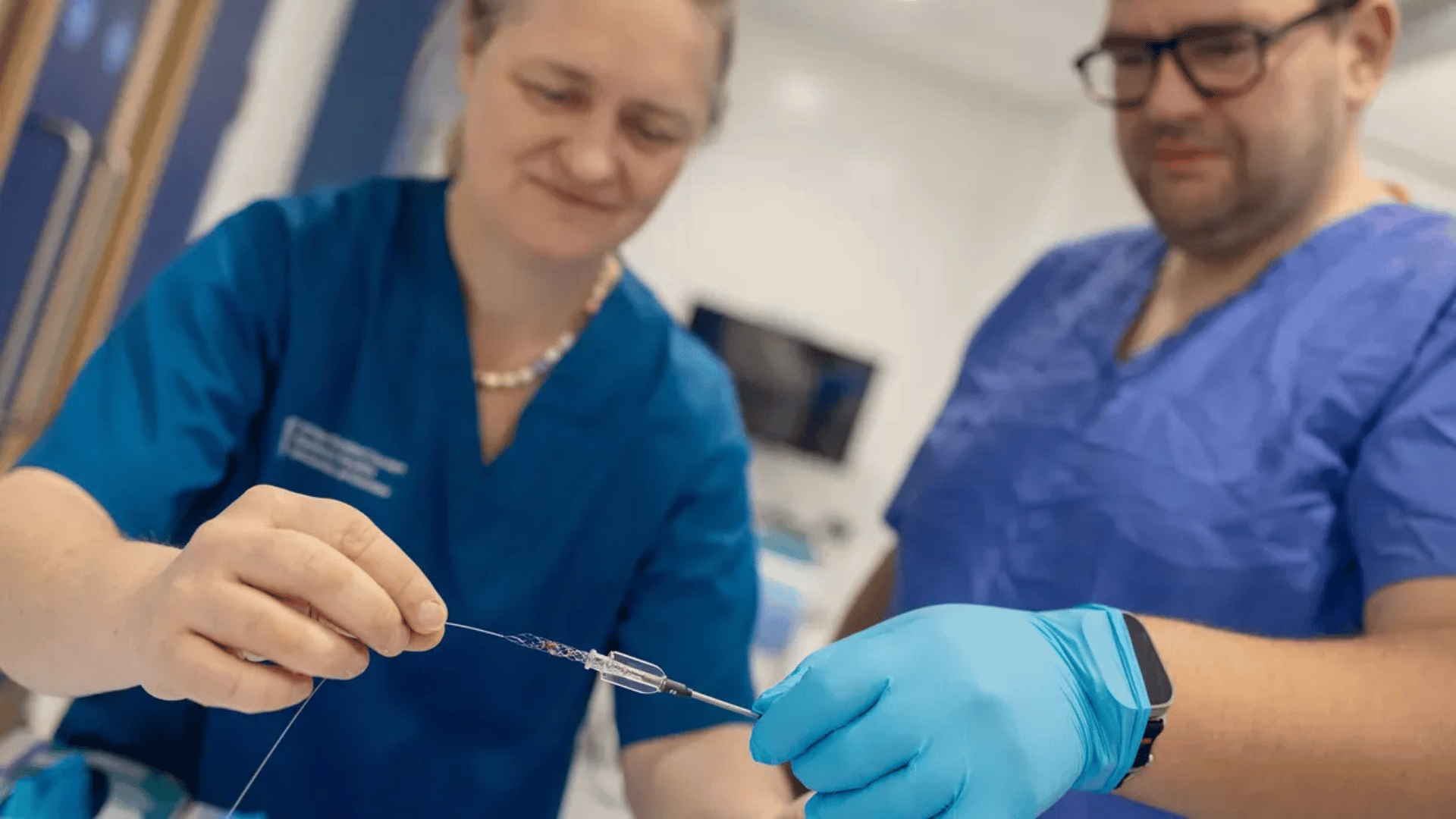Surgeons are redefining the future of emergency stroke care. In a “world’s first,” researchers at the University of Dundee performed a remote transatlantic thrombectomy procedure on a human cadaveric model. A thrombectomy is a procedure that involves removing a blood clot from a blood vessel. It’s a common procedure for stroke patients, where surgeons remove a blood clot from the arteries in the brain.
Geography is no longer a barrier for this critical and time-sensitive treatment. Cutting-edge robotic technology developed by Lithuanian MedTech company “Sentante” strengthens this argument.
Breakthrough Robotic Stroke Surgery

First, Professor Iris Grunwald, Director of Dundee’s Image Guided Therapy Research Facility (IGTRF), executed the first-ever remote thrombectomy. During the procedure, she removed a blood clot from a cadaveric brain model while operating from a separate location within Ninewells Hospital.
Hours later, the technology expanded globally. Dr. Ricardo Hanel performed the first transatlantic thrombectomy, guiding the robot in Scotland from Baptist Medical Center in Jacksonville, Florida, in conjunction with Professor Grunwald.
Notably, the innovation is a timely response to a global health crisis. Removing a blood clot from a large brain vessel is the most effective treatment for ischemic stroke. However, there is a worldwide shortage of international neuroradiologists. As a result, less than 1% of eligible patients receive the treatment in many regions.
“By the time patients reach a specialist centre, there’s often no brain left to save,” said Professor Grunwald. “Every six-minute delay in receiving treatment equates to a 1% lesser chance of a good outcome.”
According to researchers, the Sentante platform is different than other surgical robots. This system delivers authentic force feedback directly to the surgeon’s fingertips, which recreates the tangible experience of manual surgery. This is a crucial feature that enables specialists to maintain fine control over the procedure regardless of distance.
“As a neurointerventionist, it is remarkable to feel the same fine control and resistance through a robotic interface as during a live procedure,” said Professor Grunwald. “Sentante’s technology truly bridges the gap between operator and patient, no matter the distance.”
A Life Changing Impact
The trial’s success is immense. It was conducted on a “life-like” perfused whole-body human stroke model. Dr. Hanel emphasized the importance of this achievement. “Tele neurointervention will allow us to decrease the gap and further our reach to provide one of the most impactful procedures in humankind—the thrombectomy—to more people,” he said. “To operate from the US to Scotland with a 120 millisecond (blink of an eye) lag is truly remarkable.”


